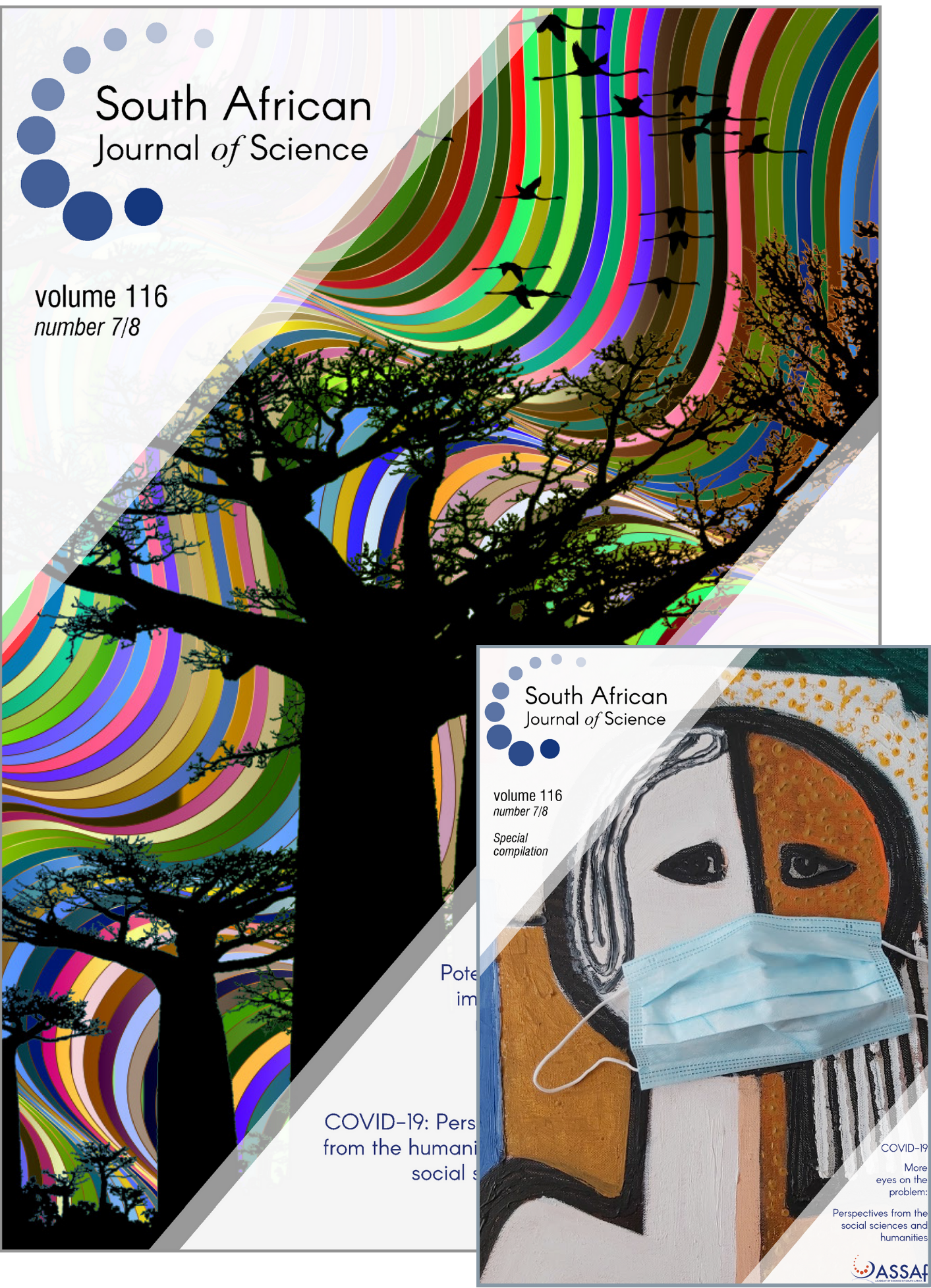Aerobiology in South Africa: A new hope!
DOI:
https://doi.org/10.17159/sajs.2020/8112Keywords:
aerospora, pollen monitoring network, pollen allergy, public healthAbstract
Pollen and fungal spores (aerospora) are the major atmospheric bioaerosols. Aerospora occurrence and concentration vary by geographical region and blossoming period, and with meteorological factors. Allergic respiratory diseases affect about 20 million South Africans, with pollen and fungal allergens amongst the leading triggers. Asthma triggered by aerospora can be life threatening; allergic rhinitis causes considerable morbidity and carries financial implications for individuals and health systems. Thus, knowledge about geographical variation, seasonal timing and intensity, as well as annual aerospora fluctuations in South Africa, where climate and vegetation are exceptionally diverse, is essential for effective diagnosis and treatment of allergies. Unfortunately, there is a lack of continuous aeropalynological data from South Africa. The longest annual monitoring exists for Cape Town (~20 years), with almost no data out of the Cape since the 1990s, and many parts of South Africa have never been monitored. In this brief review, we highlight the cross-disciplinary need for strengthened and expanded continuous aeropalynological study in South Africa, the history of efforts to date, and the introduction of the interdisciplinary South African Pollen Network (SAPNET). SAPNET was launched in seven major cities in August 2019 in order to monitor weekly variations of aerospora, and provide online data for allergy sufferers and health-care providers (www.pollencount.co.za) with the aim to establish regional pollen calendars.
Significance:
- The significance of aerobiology as the study of airborne organic particles which include pollen, spores of fungi and cryptogams, plant hair, insect remains etc. especially as agents of allergic rhinitis (commonly known as hay fever) is outlined. Cases of allergic rhinitis are globally increasing due to current climate change.
- Very limited pollen monitoring data are available for South Africa; such data are a prerequisite for establishing pollen calendars to help medical practitioners and allergy sufferers. SAPNET (South African Pollen Network) addresses this lack of data. Since August 2019, seven 7-day volumetric spore traps have been operating in South Africa in major cities, and are continuously gathering data about the pollen and spore contents in a country which is highly affected by allergic rhinitis.
Published
Issue
Section
License

All articles are published under a Creative Commons Attribution 4.0 International Licence
Copyright is retained by the authors. Readers are welcome to reproduce, share and adapt the content without permission provided the source is attributed.
Disclaimer: The publisher and editors accept no responsibility for statements made by the authors
How to Cite
- Abstract 1313
- PDF 777
- EPUB 227
- XML 371












.png)